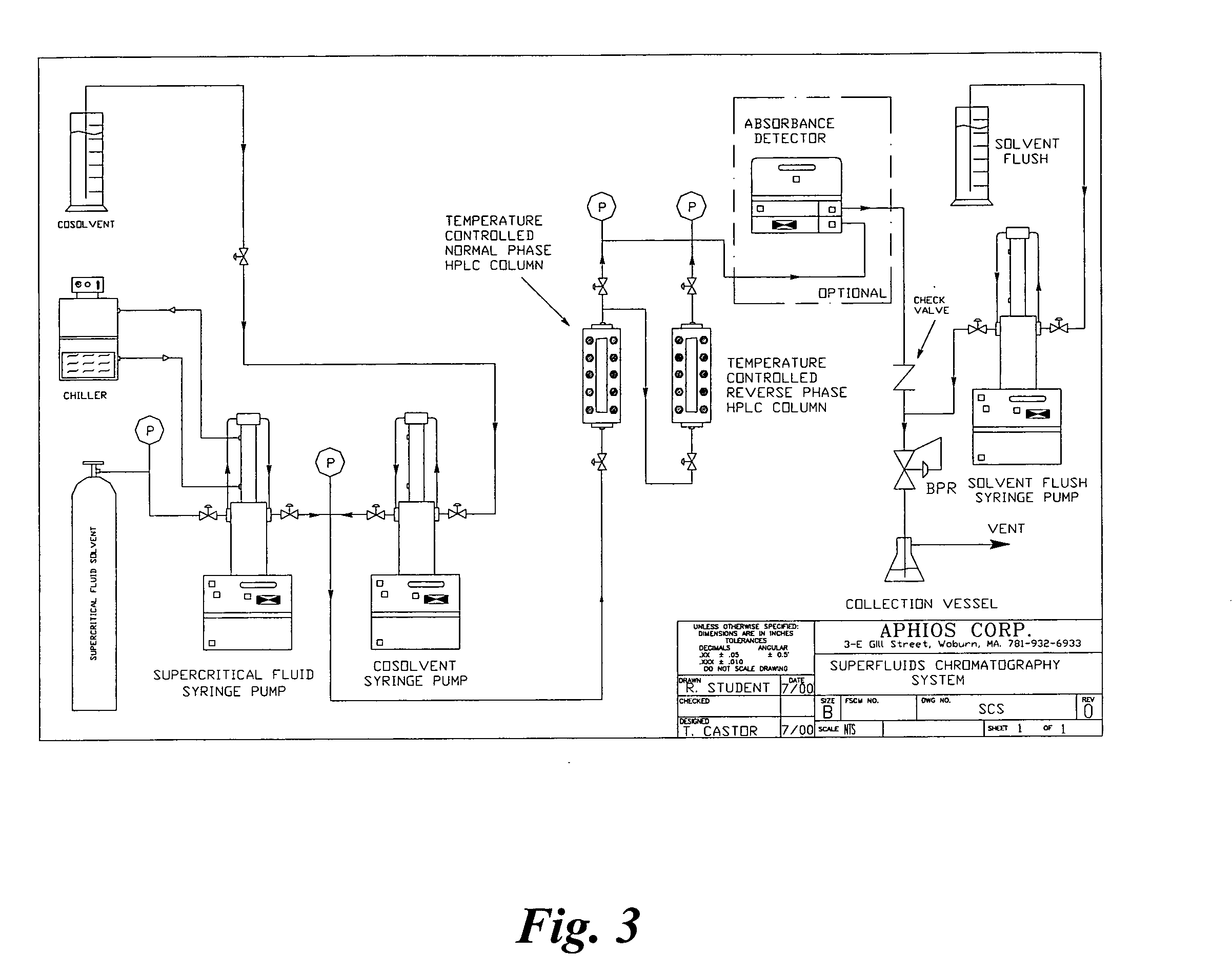Methods for making compositions and compositions for treating pain and cachexia
a composition and composition technology, applied in the field of compositions and compositions for treating pain and cachexia, can solve the problems of low bioavailability, high incidence of adverse side effects of dronabinol, and significant flawed products, and achieve high overall yield, high purity, and cost-effective
- Summary
- Abstract
- Description
- Claims
- Application Information
AI Technical Summary
Benefits of technology
Problems solved by technology
Method used
Image
Examples
example 1
Cannabis Raw Materials
[0052]Under DEA Schedule I license (No. RC0288058), two 250-gram shipments of high potency, bulk marijuana biomass were requested from the National Institute of Drug Abuse (NIDA). Both shipments were provided by the Research Triangle Institute (RTI) International, Research Triangle Park, N.C. under contract with NIDA. The first batch (RTI Batch No. 8976-1001-26 / University of Mississippi Batch No. 1182 / 1186) was received and logged in at Aphios on Dec. 17, 2002. This batch was measured by the University of Mississippi's Thad Cochran National Center for the Natural Products Research to have a Δ9-THC content of 8.98%. Table 1 lists the concentration of other cannabinoids per the provided Certificate of Analysis (Dec. 2, 2002). Table 1 also lists HPLC measurements of heat-treated biomass made by Aphios' chemists; the methods and data are detailed below. The biomass was stored in a locked safe at room temperature when not in use. All usage was recorded on a log shee...
example 2
Cannabinoid Standards
[0055]Four (4) standards were purchased for chromatographic assay. They were all purchased at certified concentrations of 1 mg / ml in methanol and transported at ambient atmosphere in sealed glass vials. The standards are as follows:
1. Cannabidiol, C21H30O2, MW=314.47, (99.9%) [Alltech]
2. Δ-8-THC, C21H30O2, MW=314.45, (90.0%) [Alltech]
3. Cannabinol, C21H26O2, MW=310.42, (98.9%) [Alltech]
4. Δ-9-THC, C21H30O2, MW=314.45, (97%) [ChromaDex, Santa Ana, Calif.]
[0056]Under Aphios' DEA Schedule I license, we requested and obtained 5 ml of 50 mg / ml Δ9-THC in absolute (100%) ethanol for use as an analytical standard.
example 3
[0057]Two (2) HPLC methods were evaluated for the analysis of Δ9-THC, Δ-8-THC, CBN, CBD and Δ9-THCA. Since Δ9-THCA is the precursor of Δ9-THC via decarboxylation (heat) and CBN is the degradation (oxidative) product of Δ9-THC, both compounds must be resolved by the chromatography system. CBD is not psychotomimetic in pure form although it does have sedative, analgesic and antibiotic properties. CBD can contribute to the psychotropic effect by interacting with Δ9-THC to potentiate or antagonize certain qualities of this effect. Δ9-THC is the main psychotomimetic (mind-bending) compound of Cannabis. Δ-8-THC is slightly less active and is reported in low concentrations, less than 1% of Δ9-THC, and may be an artifact of the extraction / analysis process.
[0058]The two HPLC methods evaluated were: (1) a gradient system utilizing a modified Phenomenex method; and (2) an isocratic system that is a modification of the Maripharm, Rotterdam, Netherlands method. The latter system was...
PUM
| Property | Measurement | Unit |
|---|---|---|
| temperatures | aaaaa | aaaaa |
| critical pressure | aaaaa | aaaaa |
| critical pressure | aaaaa | aaaaa |
Abstract
Description
Claims
Application Information
 Login to View More
Login to View More - R&D
- Intellectual Property
- Life Sciences
- Materials
- Tech Scout
- Unparalleled Data Quality
- Higher Quality Content
- 60% Fewer Hallucinations
Browse by: Latest US Patents, China's latest patents, Technical Efficacy Thesaurus, Application Domain, Technology Topic, Popular Technical Reports.
© 2025 PatSnap. All rights reserved.Legal|Privacy policy|Modern Slavery Act Transparency Statement|Sitemap|About US| Contact US: help@patsnap.com



